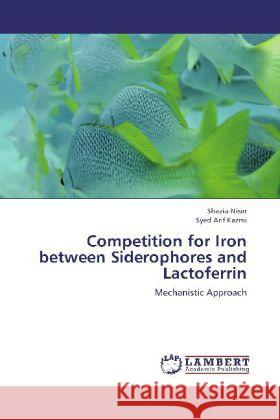Competition for Iron between Siderophores and Lactoferrin : Mechanistic Approach » książka
Competition for Iron between Siderophores and Lactoferrin : Mechanistic Approach
ISBN-13: 9783659272509 / Angielski / Miękka / 2012 / 244 str.
The fundamental role of iron in the maintenance of human health and proper growth of nearly all forms of life has been obvious for many years. Higher organisms have developed complex mechanisms for its acquisition and internal distribution. Transferrin; a glycoprotein is utilized for the distribution of iron throughout the body of vertebrates. Mammals produce another closely related glycoprotein, lactoferrin, which complexes iron on mucosal surfaces and at sites of infection. These Proteins are employed by vertebrate hosts to withhold the metal from the siderophores of invading bacteria and fungi. On the other hand pathogenic microorganisms have developed the strategy of secreting specific iron chelators called siderophores, under the low iron conditions. So, there is a competition for iron between the siderophores and lactoferrin, at the sites of infection. The aim of the present study was to determine the physico-chemical determinants of this interaction. The results might be certainly of interest for the researchers working in the field of drug designing and those, looking for potential iron chelators in iron overload conditions.











